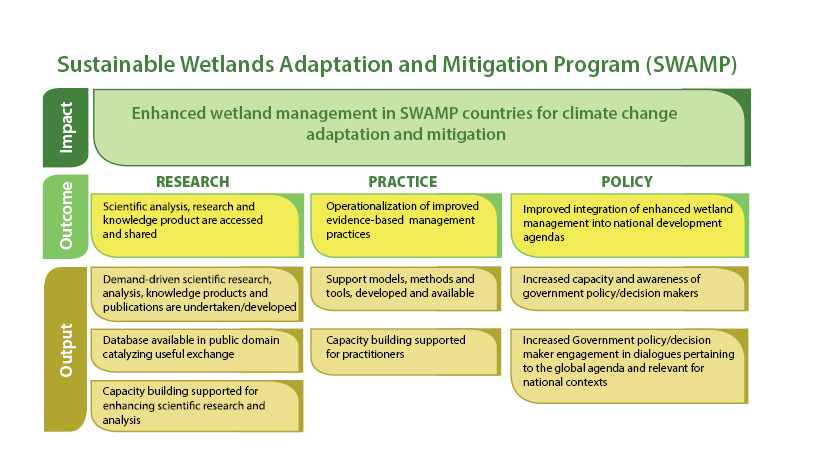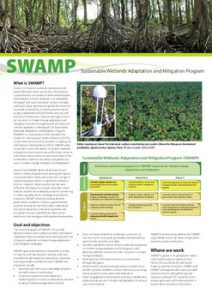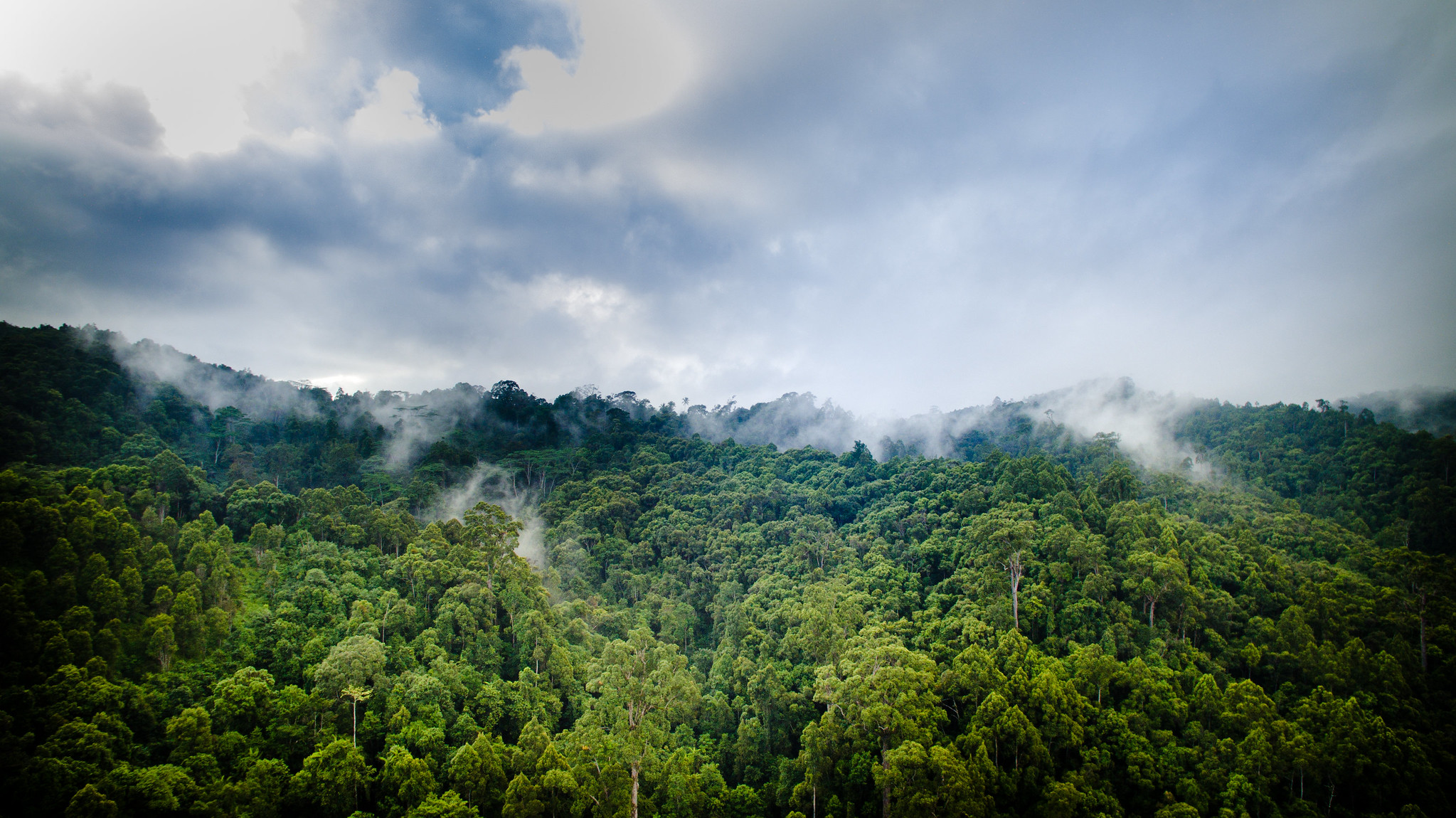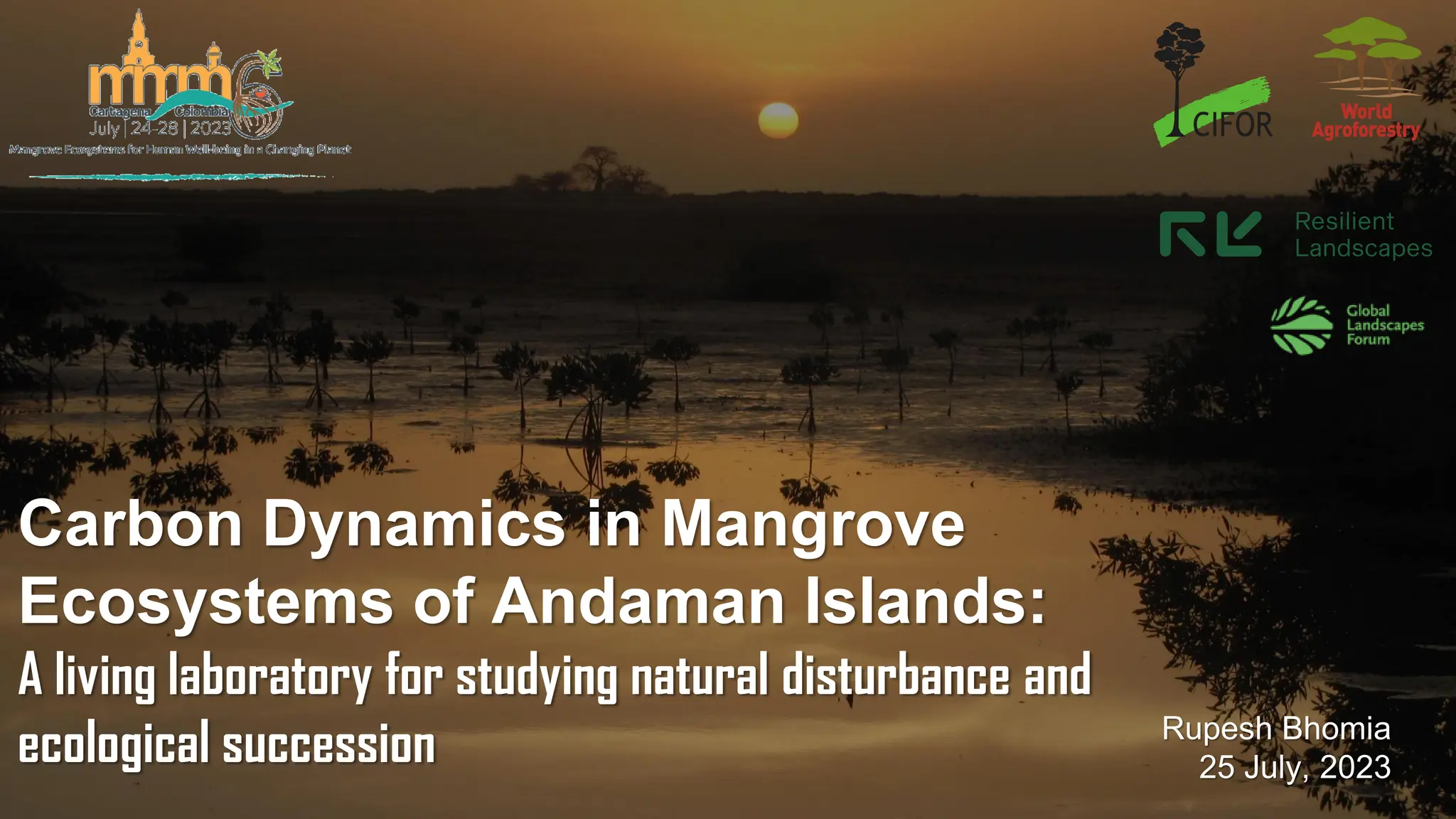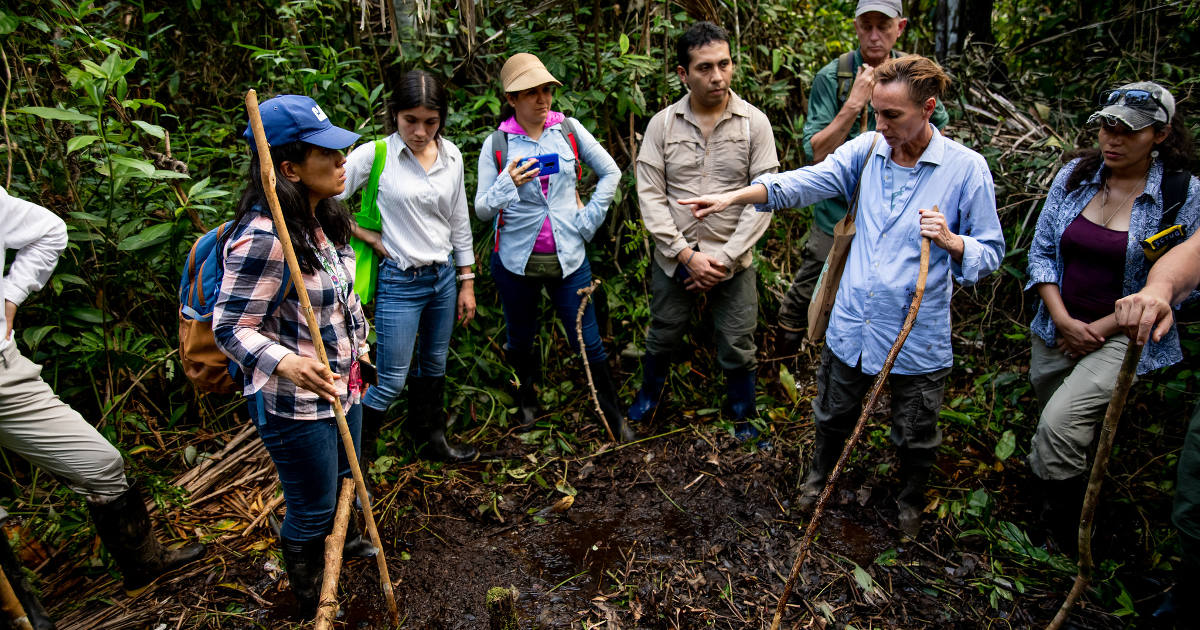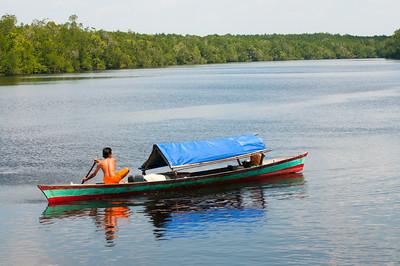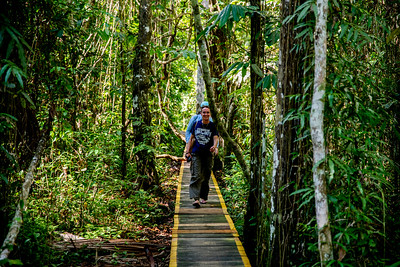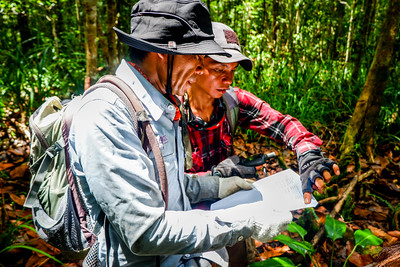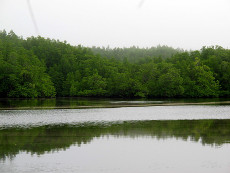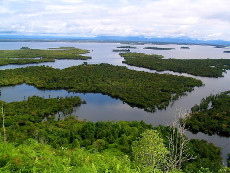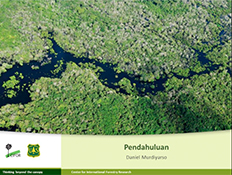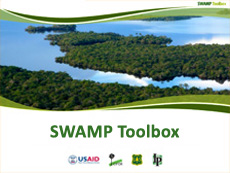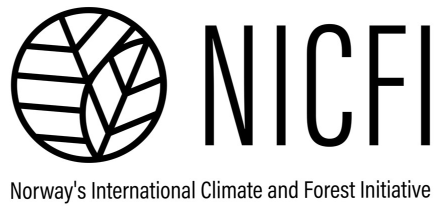The Sustainable Wetlands Adaptation and Mitigation Program (SWAMP)
Carbon rich tropical wetlands (mangroves and peatlands) store more carbon per unit area than upland tropical rain forests or other wetland types. Deforestation of these wetlands is of immediate ecological and socio-economic concern, already leading to major greenhouse gas (GHG) emissions, increased vulnerability of communities to storm surges, threatened food and health security, and the loss of biodiversity. They are also high priority for inclusion in climate change adaptation and mitigation activities throughout the world but are not well studied or understood. The Sustainable Wetlands Adaptation and Mitigation Program (SWAMP) is a collaborative effort by the Center for International Forestry Research (CIFOR) and the USDA Forest Service (USFS) with support from the US Agency for International Development (USAID).
SWAMP seeks to provide critical information on tropical wetland ecosystem values, how to more effectively conserve and restore them, and to increase awareness of the tremendous potential role these ecosystems can play in climate change mitigation and adaptation. Results from SWAMP demonstrate that carbon stocks in these ecosystems are among the highest of any wetland or forest and land cover change in these ecosystems results in significant emissions of GHG.
However, most countries do not have sufficient information to include wetlands in their national reports nor to develop plans for conserving or restoring wetlands as a strategy to avoid GHG emissions. SWAMP scientists collaborate with government, academic, and non-governmental partners around the world to better understand the carbon dynamics in these ecosystems and to support country-led efforts to reduce GHG emissions from mangrove and peatland ecosystems.
SWAMP activities are guided by the SWAMP Logic Model which has three components – research, practice and policy as shown below
Where we work
Ecosystems
Tropical peatlands and peat swamp forests cover a small area of global peatlands, yet these ecosystems play an important role in the global carbon cycle. Peatlands only cover 3% of the earth’s land surface, however, peatlands can store twice as much C as all the world’s forests.
Mangroves represent coastal or marine ecosystems, found predominantly in tropical or semi-tropical regions of the world. Mangroves are among the most ecologically and socially valuable ecosystems on the planet. This ecosystem can store 3-5 more carbon than terrestrial ecosystems.
Publications
Forests news
Stories
An international and multidisciplinary team of researchers has released a groundbreaking new study that tracks over three decades of changes in the global forest carbon sink—equivalent to nearly half of the world’s fossil fuel emissions.
Scientists at the Center for International Forestry Research and World Agroforestry (CIFOR-ICRAF) have published a study that is set to lift the game in emissions reporting for high-carbon wetland ecosystems.
Perched on a wooden plank, ecologist Sahadev Sharma cautiously drills steel rods into the mud near the tangled roots of mangrove trees. In the fast-depleting Sundarbans forest, the rods will monitor whether the mangroves are building enough sediments in time to outpace the rising seas around them.
Presentations
Podcasts
Toolboxes
The Mangrove Restoration and Monitoring Tool (MRMT) is a spatial app to visualize and share information on mangrove restoration opportunity and annual mangrove loss and their drivers. Users can access and interactively analyze data by creating spatial areas of interest to show the data.
The Global Wetlands Map is an initiative to collect and share information on tropical wetlands in a visual format. Users can access data and contribute their own, using standard geographic information systems software such as ArcGIS.
This toolbox is a collection of lecture materials in PowerPoint aimed to understand the challenges and opportunities of peatlands in Indonesia and its relation to climate change mitigation and adaptation.
The Sustainable Wetlands for Mitigation and Adaptation Program (SWAMP) Toolbox has been developed to guide users in understanding the importance of wetlands ecosystems as carbon reservoirs for climate change adaptation and mitigation strategies.

